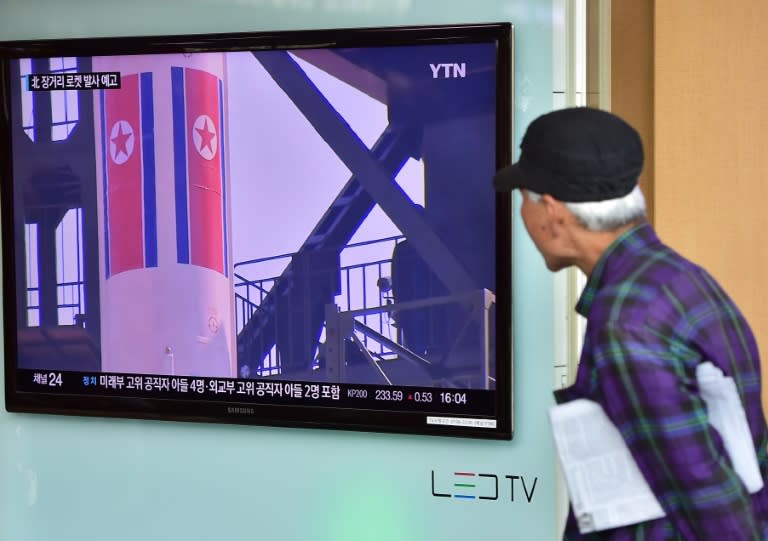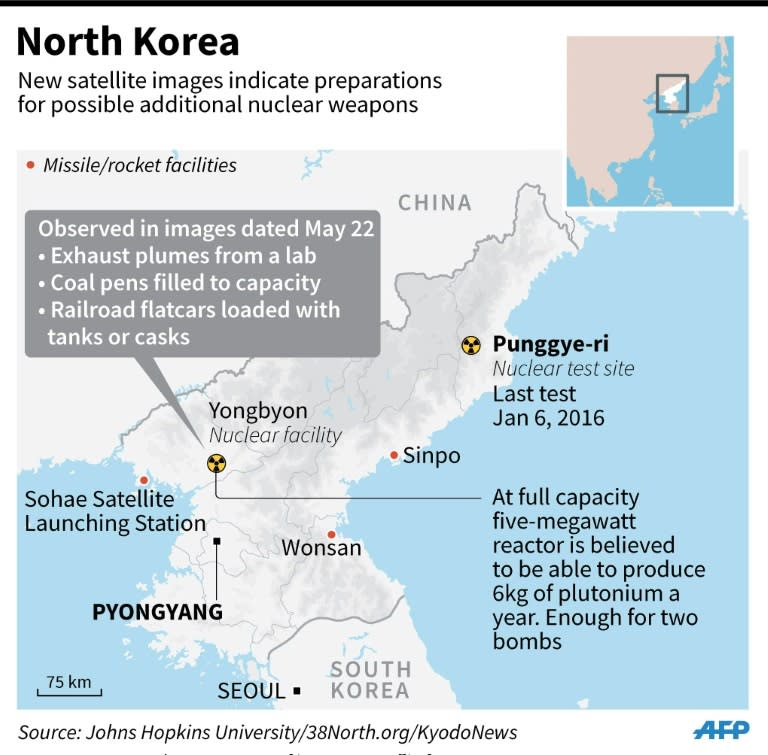Signs of reprocessing at N. Korea complex: US think tank
Recent satellite images reveal multiple indicators that North Korea is preparing, or has already begun, to reprocess plutonium for additional nuclear weapons at its main atomic complex, a US think tank said. Exactly how much weapons-grade plutonium the North can produce at the Yongbyon complex is unclear, said analysts at the US-Korea Institute at Johns Hopkins University. When operating at full capacity, the main five-megawatt reactor at Yongbyon is understood to be capable of producing six kilos (13 pounds) of plutonium a year -- enough for one or two bombs. The recent satellite pictures show two railroad flatcars -- loaded with tanks or casks -- near the complex's radiochemical laboratory. Similar flatcars were seen during reprocessing campaigns in the early 2000s and the casks could be used to supply chemicals for reprocessing work, the institute said. At the same time, exhaust plumes were seen coming from the lab's thermal plant and coal pens adjoining the plant appeared filled to capacity. Meanwhile, a lack of activity and steam generation at the main reactor suggest it is either not operating or doing so at an extremely low level, the analysts said. The reactor needs to be shut down in order to discharge the spent fuel for reprocessing. North Korea mothballed the Yongbyon reactor in 2007 under an aid-for-disarmament accord, but began renovating it after its third nuclear test in 2013. The director of US National Intelligence, James Clapper, warned back in February that the North could begin recovering plutonium from the reactor's spent fuel "within a matter of weeks to months". North Korea has carried out four nuclear tests -- the most recent on January 6, when it announced it had detonated its first hydrogen bomb. Experts have disputed the H-bomb claim, saying the yield from the test was far too low for a fully fledged thermonuclear device.

 Yahoo Finance
Yahoo Finance 

